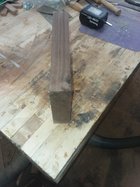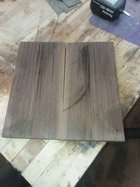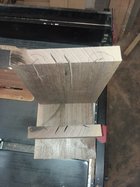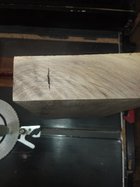- Joined
- Feb 28, 2021
- Messages
- 1,576
- Likes
- 1,375
- Location
- Roulette, PA
- Website
- www.reallyruralwoodworks.com
I have seen a few posts (and participated in a few) that mention and describe Case Hardening, but I don't recall seeing any photos or examples. I came across this piece of Firewood (in a box of purchased mixed offcuts) that might be worth posting as an example of what can happen when buying lumber or turning blanks.
In the following photos, the FIRST TWO are what the whole blank (8/4 walnut) looked like before resawing (Ignore the fact it has already been resawn!) - from the outside, there is NO indication at all of case hardening - no checks, cracks or splits and looks like a nice, beautiful piece of walnut .. So I resawed it, thinking it would make a nice box (along with a some Maple lumber I already had) in flatwork.. and the third picture shows the disappointment - consigned to the firewood pile now... so I am glad I didn't decide to try and turn something from it (which would have meant worse disappointment after all that work)



In the following photos, the FIRST TWO are what the whole blank (8/4 walnut) looked like before resawing (Ignore the fact it has already been resawn!) - from the outside, there is NO indication at all of case hardening - no checks, cracks or splits and looks like a nice, beautiful piece of walnut .. So I resawed it, thinking it would make a nice box (along with a some Maple lumber I already had) in flatwork.. and the third picture shows the disappointment - consigned to the firewood pile now... so I am glad I didn't decide to try and turn something from it (which would have meant worse disappointment after all that work)






